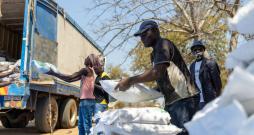As the church and MCC work together, peace grows in Kikwit

Caption above: Forced to flee violence in the Kasai region of the Democratic Republic of Congo, Euphrasie Minzambi, 38, praises the Lord at Kimpwanza Kikongophone Parish, a Mennonite Brethren church in Kikwit, a city of refuge for thousands. Justin Makangara/MCC/Fairpicture
Since the arrival of survivors fleeing the brutal fighting in the Kasai region of the Democratic Republic of Congo in 2017, the Mennonite Brethren Church in Kikwit has been helping the displaced with faith and action.
These survivors arrived suffering from burns, machete wounds, or with unborn babies. They were exhausted from weeks or months of walking from various parts of the neighboring Kasai province, without sufficient food or water. Having witnessed the massacre of their family members and neighbors, they brought emotional wounds with them.
The Community of Mennonite Brethren Churches in Congo (CEFMC), based in Kikwit, recognized their need. People responded to the call, welcoming them into their homes and providing them with clothing and food. CEFMC hospital staff provided medical care, and their churches became temporary shelters.
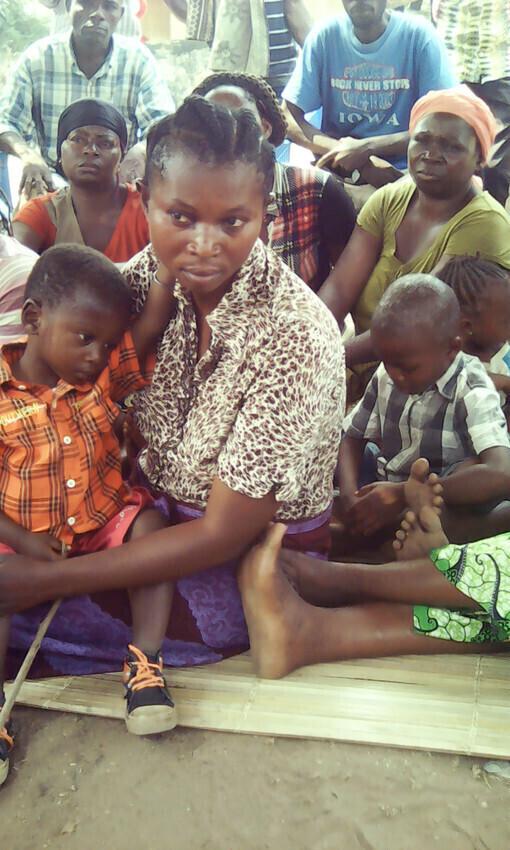
However, the needs exceeded the resources available to the CEFMC alone. The MCC, with initial financial support from global Anabaptist organizations, then from the Canadian Foodgrains Bank and MCC donors, supported the CEFMC. Together, the members of the local committee provided the displaced with the means to establish a new life in Kikwit.
The Church is called to respond to the holistic needs of its members, explains Antoine Kimbila, secretary general of the CEFMC. When a person's spiritual and physical needs are met, they are more likely to experience peace.
“Peace is synonymous with shalom. When we say shalom in Hebrew, it is salvation that encompasses all aspects of human beings,” he says. “What you (MCC) bring to the community in the form of projects... when these projects are combined with the word of Christ, they bring peace to humanity.”
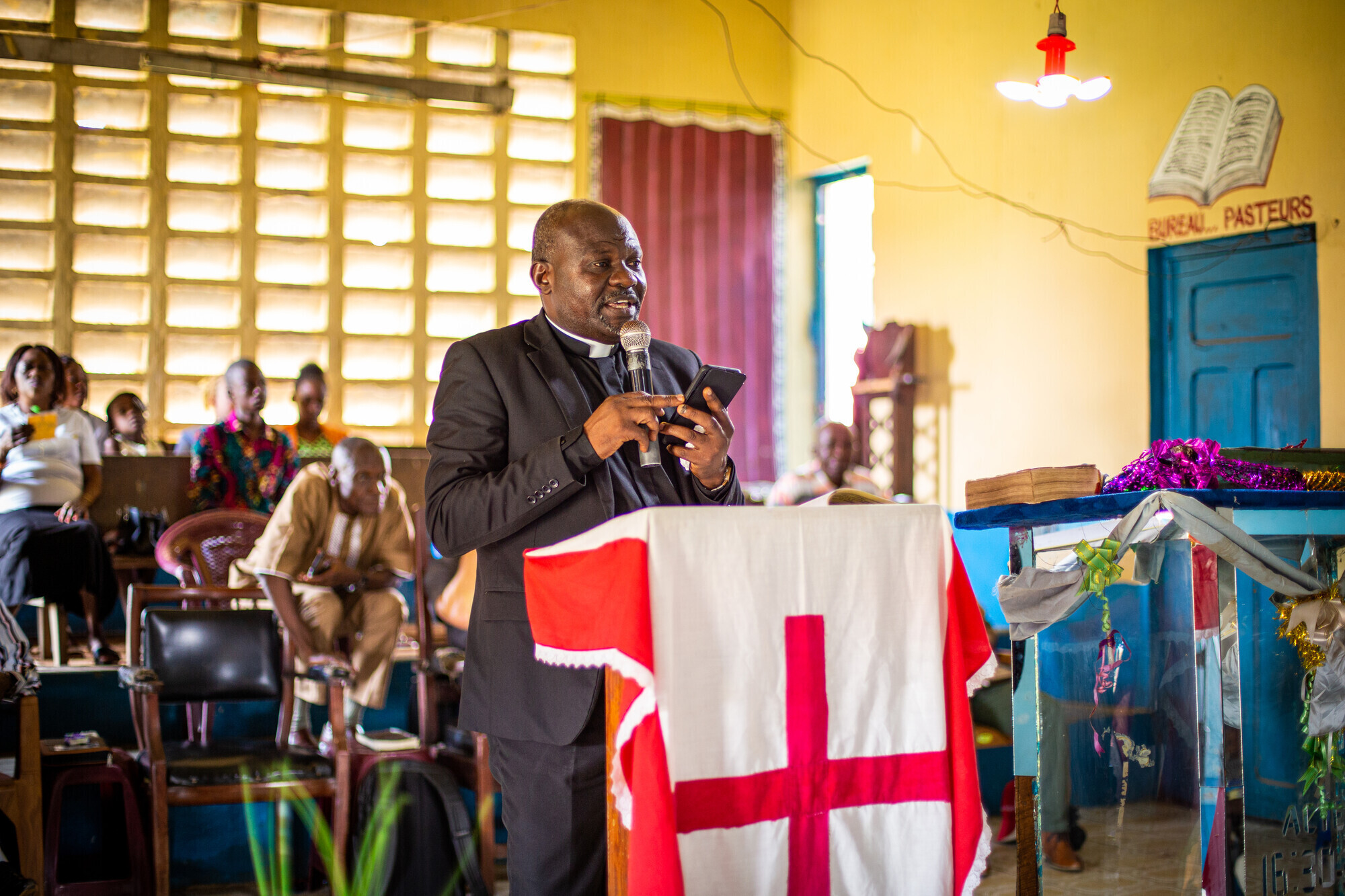
However, peace did not immediately come to Kikwit. The arrival of displaced people in the community caused conflict, explains Jacqueline Kafuti, the first CEFMC alumna to welcome people into her home. Other neighbors did the same, she says, but some rejected the newcomers because of their limited resources.
In addition, some displaced people have behaved badly because of the trauma they suffered, explains Kufutama Kafaire, a member of the local CEFMC committee that handles finances.
"Someone who flees, who is displaced because of war, is disturbed in their mind. It seems as if the war is following them everywhere," says Kufutama Kafaire.
Equal access to education is one of the ways CEFMC strengthens ties between newcomers and long-time residents. Providing school supplies to primary school students and paying secondary school fees have helped ease the burden on host families. CEFMC has also provided trauma-informed training to teachers.

Colette Koy Mazao, whose sixth-grade class doubled with the arrival of displaced children, explains that she struggled at first because the new students isolated themselves at the back of the class and spoke neither the local language, Kikongo, nor the academic language, French.
Some displaced children exhibited violent behavior. Others sometimes cried when she interviewed them. When she asked them why, they replied, "We think about what we've been through."
Through the training, Ms. Mazao and other teachers learned the importance of mixing students in the classroom, instead of having them sit in separate groups. Teachers organized outdoor activities so that students from both groups were on the same teams.
In class, Ms. Mazao explains that she has learned to pay more attention to the emotional needs of displaced children by pulling them aside when they seem upset. If a student is frequently absent or sick, she visits their family to see if there is a problem she can help resolve.
Ms. Mazao also learned to be less serious in class and to joke around with the children. "This helped not only the displaced children, but all the students to live peacefully with everyone."
She is happy that one of the displaced children is at the top of the class academically this year. He also helps her monitor classroom behavior when she is absent.
“Things didn’t change that quickly,” Ms. Mazao explains. “We worked incrementally. Now we’re seeing improvements.”
At the CEFMC hospital in Kanzombi, staff initially struggled to manage the displaced people's behavior. Dr. Jacques Tangudiki, a member of the local CEFMC committee and head of health care,
said the displaced people demanded priority treatment and tended to be violent and unresponsive to treatment. This created tensions between nurses and patients.
“Imagine your father being murdered in front of you, your mother being raped in front of you. They were living with all these traumas,” Tangudiki explains. “Sometimes they expressed their anger when nothing seemed to justify it.”
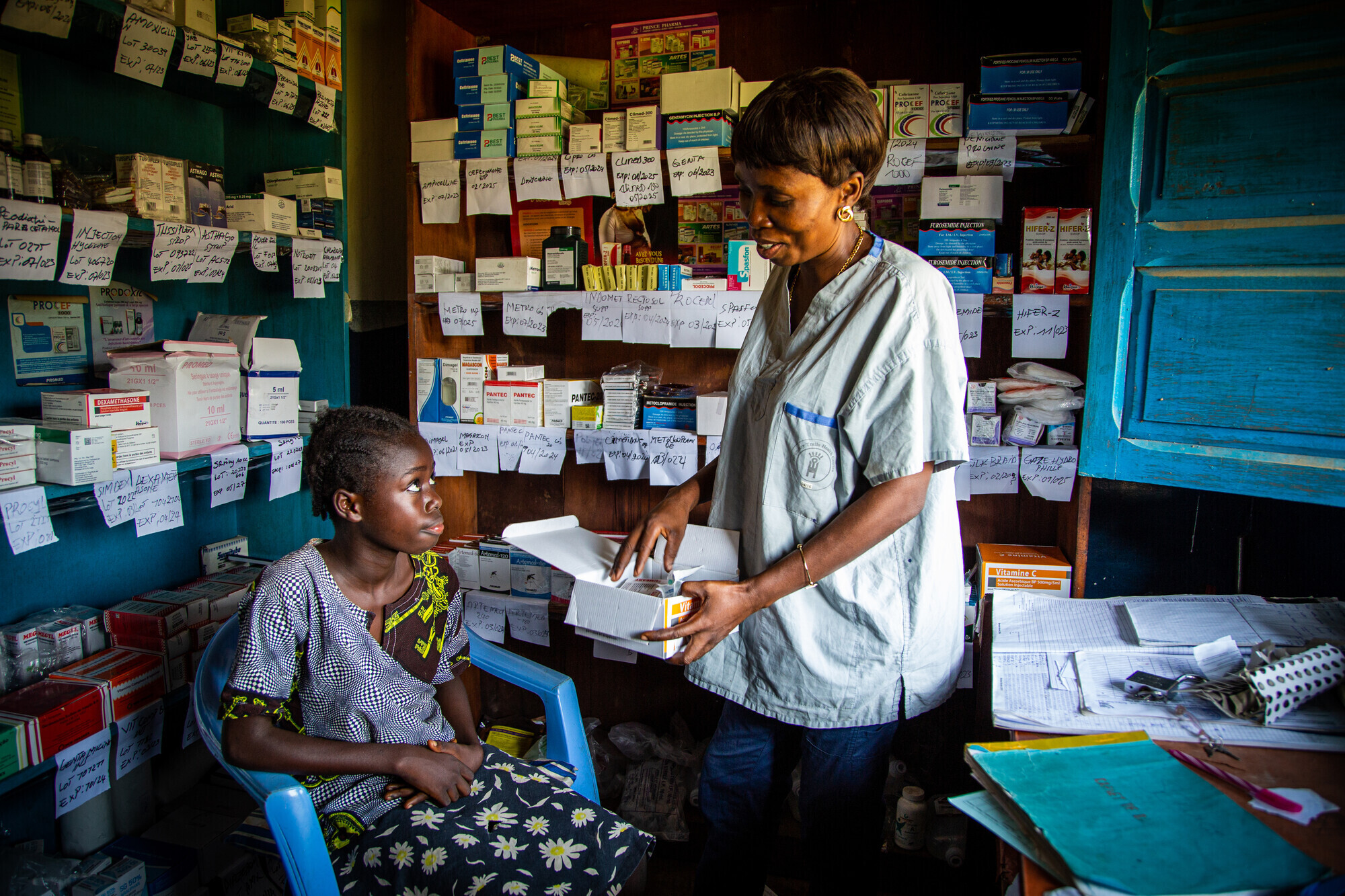
Tangudiki explains that nurses have learned to understand this post-traumatic reaction and help people manage their emotions through trauma training provided by the MCC. The hospital also provides free basic care to the displaced, including disease prevention measures and medication for common illnesses such as malaria and waterborne diseases.
Additionally, by drilling two wells, CEFMC worked with MCC to reduce the rate of waterborne diseases that caused nausea, vomiting, and diarrhea. Drinking water from a well drilled in Kanzombi in 2021 helped reduce hospital treatment for waterborne diseases from 38% to 9%, Tangudiki says.
Clean water has improved the health of thousands of people in Kikwit. It has also helped reduce frequent fights at remote springs where people used to collect water, even if it wasn't safe to drink. Young people, whose parents demanded they fetch water several times a day, would fight over who would be the first to access the only water pipe.
Now that the wells are located close to where they live, adults can collect water throughout the day. They have time to fetch water and work together in the fields that CEFMC has provided to the most vulnerable displaced people and their host families.
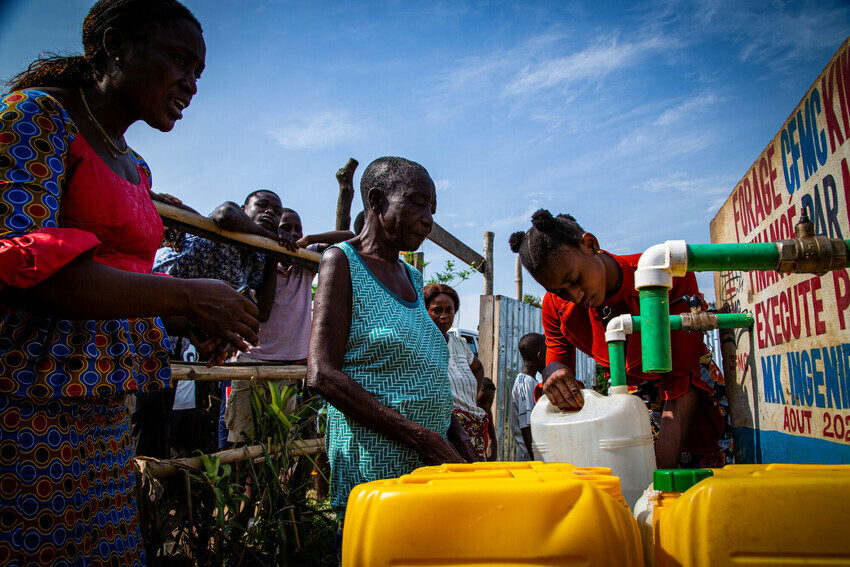
“Without water, there is no life,” says Kimbila. “People need water in their bodies. Clean water helps treat diseases, education helps people understand the world, and agriculture helps them feed themselves. So all these projects need water for human survival.”
He compared the holistic work of CEFMC to the hungry and tired people who listened to Jesus preach. Jesus fed them by distributing a boy's fish and bread.
“This man (Jesus) came not only to save the soul, but also the body. Salvation is comprehensive and salvation is holistic. God cares for us, not only spiritually, but also physically. That is why, as a Church, we work with partners to save people holistically.” He adds, “It is difficult to bring peace to someone who is hungry.”
In the town of Tshikapa, a 10-hour drive from Kikwit, the Mennonite Community in Congo (CMCo) is implementing projects similar to those of the CEFMC. The Evangelical Mennonite Community (CEM) in Kabwela also ran projects with the MCC during the first two or three years following the Kasai massacres.
The once-tense relationships between the churches and with the MCC have been resolved as the groups work together to address the needs of the displaced and their hosts. Thanks to training provided by the MCC and the conflict resolution skills of former representative Mulanda Juma, local committees of each denomination are equipped to respond to crises.
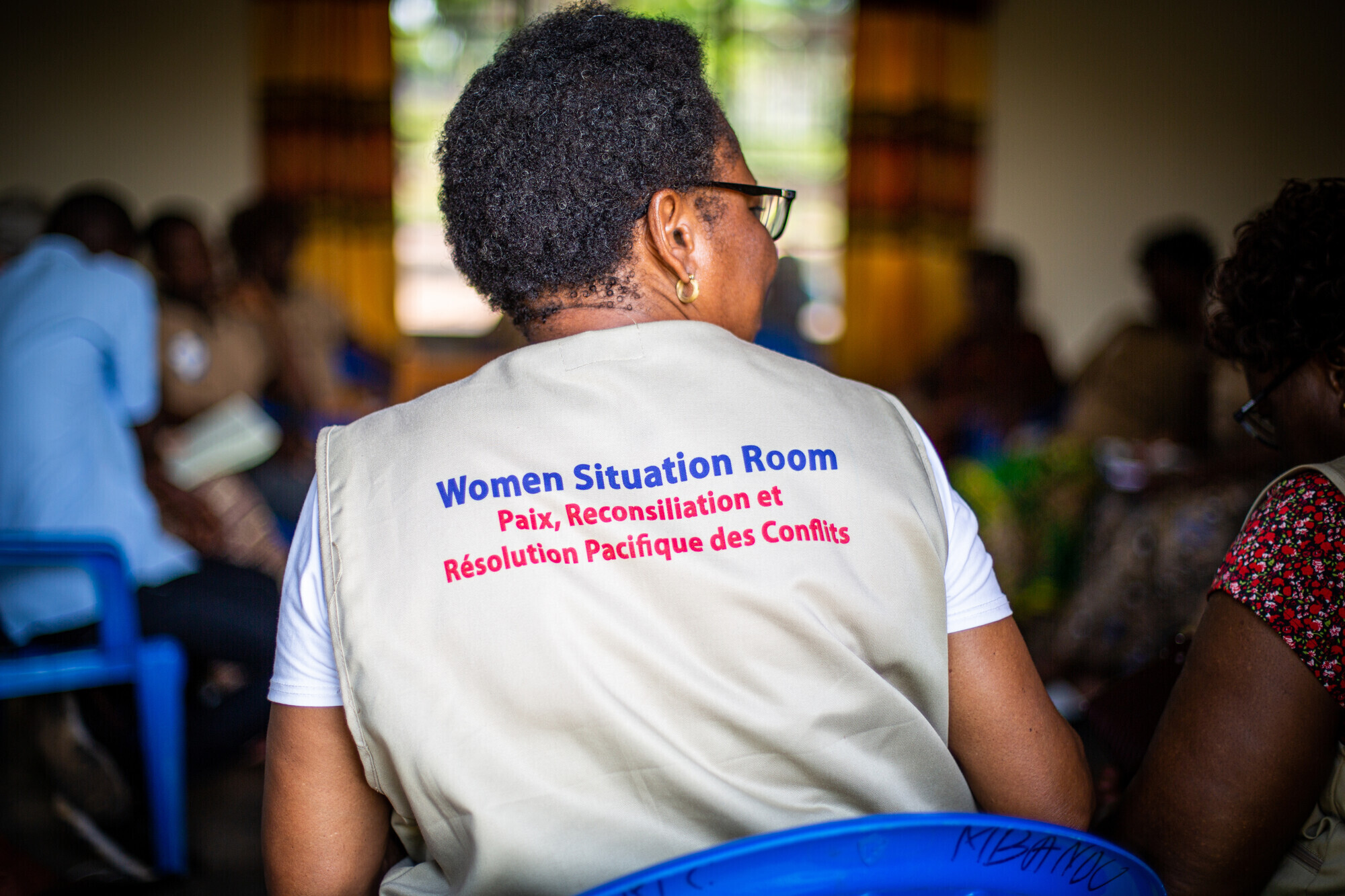
Women from CMCo and CEFMC also underwent joint training to create women's crisis rooms. Through these local organizations, women apply the peacebuilding skills they have learned to resolve conflicts within their families, friends, and communities.
Thanks to all this peacebuilding, humanitarian and spiritual work, the displaced are gradually settling into life in Kikwit.
“When they arrived, they were missing a lot, but today they feel joy above all, because many of them have become members of our church, which is a big step forward,” explains Kimbila. “Because they are standing by our side, they feel that there are people who love them, with whom they can live.”
